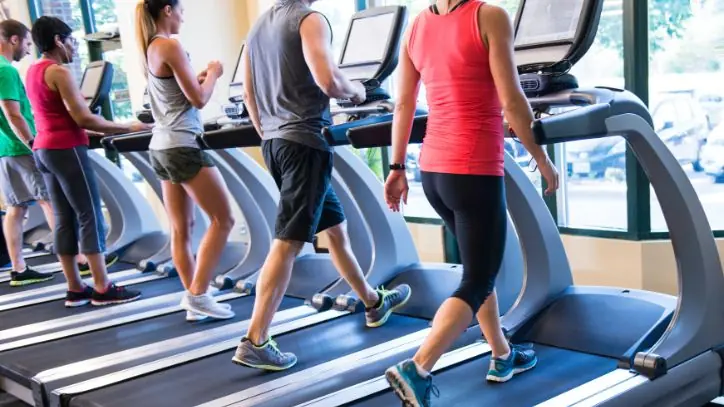Blog
Exercise Builds Your Brain Too!

In today’s fast-paced world, we often focus on physical fitness as a means to boost our appearance and physical health. However, the benefits of exercise extend far beyond the muscles we build or the calories we burn. Research has increasingly shown that regular physical activity is essential for brain health and cognitive function. It’s not just about getting buff arms or achieving those coveted ripped abs; exercise actually plays a vital role in strengthening our brains.
The Connection Between Exercise and Brain Health
The relationship between physical activity and brain health is underlined by two noteworthy studies, highlighting how exercise can preserve brain function and enhance cognitive abilities.
Study 1: Exercise and Cognitive Function
The first study explored the impact of physical activity on thinking and brain performance. Researchers conducted tests comparing individuals with different levels of physical activity. Those who were more physically active consistently scored higher on cognitive tests compared to their sedentary counterparts. This significant correlation suggests a direct link between regular exercise and enhanced brain performance.
According to a study published in the Journal of Clinical Psychiatry, the cognitive benefits of physical activity could be attributed to increased blood flow and oxygen supply to the brain. When we engage in exercise, our heart rate increases, facilitating better circulation. Improved blood flow ensures that the brain receives essential nutrients and oxygen, which are vital for maintaining cognitive functions like memory and learning.
Moreover, an article in the Frontiers in Human Neuroscience journal discusses how exercise can help reduce anxiety and depression, which are both known to impair cognitive function. The results suggest that the more actively we engage in physical exercise, the sharper our cognitive abilities may become as we age.

Study 2: BDNF and Brain Growth
The second study revealed that exercise triggers an increase in the production of a brain-derived neurotrophic factor (BDNF), a protein that plays a critical role in the growth, maintenance, and survival of neurons. BDNF is like fertilizer for the brain, promoting neurogenesis—the process of generating new neurons—and synaptic plasticity, which is essential for learning and memory.
During exercise, our brains release significantly more BDNF, which contributes to brain health by supporting overall cognitive function. A report elaborates on how physical activity encourages the release of BDNF, enhancing various cognitive functions and potentially delaying the onset of neurodegenerative diseases associated with aging, such as Alzheimer’s and dementia.
Interestingly, researchers found that even simple activities, such as taking a leisurely walk, stimulate the production of BDNF. However, the benefits are magnified with more intense exercise. Just six minutes of vigorous physical activity can result in over a threefold increase in the production of BDNF. This stark contrast underscores how intensified efforts not only benefit physical health but significantly contribute to cognitive enhancement.
Types of Exercise Beneficial for Brain Health
Not all exercises yield the same cognitive benefits. Different types of physical activity can have varied impacts on brain health. Here’s a closer look at some beneficial types:
1. Aerobic Exercise
Aerobic activities, such as running, swimming, or cycling, are particularly impactful. These forms of exercise elevate heart rates and stimulate circulation, promoting overall brain health. According to a study, individuals who engage in regular aerobic exercise exhibit improved cognitive function compared to those with a sedentary lifestyle.
2. Resistance Training
Strength training isn’t just for building muscle; it also has cognitive benefits. Research shows that resistance training can enhance executive functioning and memory in older adults. The interplay between physical exertion and cognitive engagement during these workouts may explain the positive outcomes observed in various cognitive tests.
3. Mind-Body Exercises
Activities such as yoga and tai chi combine physical movement with mental focus, offering a twofold advantage. They reduce stress and improve cognitive flexibility and balance. A study featured in Harvard Health illustrates how practicing yoga positively affects brain functioning, particularly in enhancing memory and executive function.
The Age Factor: How Exercise Benefits Aging Brains
As we age, our brains naturally undergo changes that can affect cognition, often leading to challenges like slower processing speed and memory loss. However, exercise can mitigate some of these effects by promoting neuroplasticity—the ability of the brain to reorganize itself.
A longitudinal study indicated that older adults who regularly engage in physical activity exhibit better cognitive performance than those who are inactive, reinforcing the idea that exercise is a powerful protector of brain health as we age.
Moreover, incorporating regular exercise into your routine can improve mood and mental well-being, combatting feelings of isolation and depression that often accompany aging. These mental health benefits are essential for maintaining cognitive longevity.
Practical Tips for Incorporating Exercise into Your Routine
Understanding the cognitive benefits of exercise is one thing, but putting it into practice is another. Here are some practical tips to help you incorporate exercise into your daily routine:
1. Start Small
If you’re new to exercising, begin with short workouts that fit easily into your daily life. Even a brisk 10 to 15-minute walk can yield significant cognitive benefits. Gradually increase the intensity and duration of your workouts as you become more comfortable.
2. Find Activities You Enjoy
Exercise doesn’t have to be a chore. Engage in physical activities that you find enjoyable—whether it’s dancing, hiking, swimming, or joining a sports league. Enjoyable activities are more likely to become a regular part of your life.
3. Set Realistic Goals
Set achievable fitness goals that are achievable and specific. For example, aim for at least 150 minutes of moderate aerobic activity each week, as recommended by the World Health Organization. These goals can motivate you and keep you accountable.
4. Mix It Up
Include a variety of exercises in your routine that targets different muscle groups. Mixing aerobic exercise with strength training and flexibility work can prevent boredom and promote overall fitness.
5. Include Social Elements
Consider joining a fitness group or workout class. Exercising with others can boost motivation, provide social interaction, and make physical activity more enjoyable.
6. Track Your Progress
Tracking your workouts can help you recognize your achievements and stay motivated. Numerous fitness apps and wearable devices are available to assist you in monitoring your physical activity and progress over time.
Conclusion: A Call to Action
With growing evidence showing that exercise is essential for maintaining and enhancing brain health, there’s no better time to put on those workout shoes and get moving. Not only will you reap the physical benefits of increased strength and endurance, but you’ll also be investing in your cognitive future.
The evolution of research in this field empowers us with knowledge that actively participating in physical exercise can boost brain function, preserve neuroplasticity, and even slow cognitive decline as we age. So, the next time you consider skipping that gym session, remember: you’re not just skipping a workout; you’re potentially missing out on the chance to strengthen your most valuable asset—your brain.
And with so many more resources available, including articles and guides about how exercise can enhance not just muscle but also brain power, the journey to a healthier life is more accessible than ever. Dive into those resources, stay curious, and keep moving for the sake of both your body and mind!
By Heide Kennedy, Arizona Farm Bureau Communications Intern


















